by M. Jayasiri, N. Dayawansa, Karin Ingold, and Sudhir Yadav
Paddy cultivation is significant in Sri Lanka, as 15% of the country’s land is dedicated to paddy production. However, the country’s rice production systems face various challenges due to climate and other stresses. Understanding sustainability gaps in Sri Lankan rice production systems is crucial for achieving sustainable development goals.
Fast-growing population, depletion of natural resources, and climate change are exerting immense pressure on food demand worldwide. In most Asian countries, including Sri Lanka, ensuring the sustainability of rice-based systems is an important aspect of addressing these challenges and achieving food security.
The rice production systems need to be profitable (economic sustainability), provide societal benefits (social sustainability) with a minimal negative impact on the environment (environmental sustainability). Globally, more attention has been paid to economic outcomes (e.g., grain yields) rather than a holistic approach encompassing multiple domains of sustainability.
Furthermore, a major limitation of most studies is their focus on plot- or farm-level analyses with relatively little attention to spatial heterogeneity, which is critical for scaling interventions
Paddy cultivation holds significant importance in Sri Lanka, as 15% of the country’s land is dedicated to paddy production. Sri Lanka’s paddy production has averaged 4.18 million metric tons of paddy over ten years (2013− 2022). However, the rice production systems in the country face various challenges due to climate and other stresses.
Therefore, understanding sustainability gaps in Sri Lankan rice production systems is crucial for achieving sustainable development goals. While several studies have been carried out in Sri Lanka on the performance of rice production systems but without a holistic approach to the economic, social, and environmental dimensions of sustainability.
Several studies reported high potential paddy land productivity levels of 6–8 t/ha; however, the average national land productivity was 4.05 t/ha, during the period 2015–2019 highlighting relatively large yield gaps. In addition, the total nitrogen loss from paddy farming in Sri Lanka is high with 70% of applied urea being lost, indicating poor nitrogen use efficiency and risks of water pollution. Fertilizer and pesticide pollution is evident in the Deduru Oya basin of Sri Lanka.
Furthermore, the potential ecotoxicological impacts of applied pesticide use such as risks of amphibian growth by Diazinon, insect mortality by Fipronil, and fish reproduction risk by Diazinon, have also been reported in the same basin . Using fertilizers, pesticides and herbicides can cause human, ecotoxicological, and environmental (e.g., carbon, nitrogen, and water footprints) impacts.
The water productivity of the most intensive paddy farming areas in Sri Lanka, Polonnaruwa, and Gal Oya schemes are reported within the range of 0.22–0.44 kg/m3. However, these figures are still on the lower side compared to the global range of 0.15–0.60 kg/m3. The gaps in land productivity, nutrient management, pesticide use, and water productivity indicate needed improvements in economic and environmental sustainability dimensions.
Although, contamination of rice grains by toxic substances like heavy metals is not reported in Sri Lanka, it is important to note that long-term ingestion of contaminated foods containing harmful substances, even at low concentrations below the threshold, can have potential health consequences.
All these facts provide evidence of overall sustainability gaps in Sri Lankan rice systems, and most studies have focused on one or two domains of sustainability and have not examined rice systems comprehensively.
To our knowledge, there have been no attempts to utilize a comprehensive framework to examine the economic, environmental, and social sustainability aspects of Sri Lankan rice production systems on a spatial scale to comprehend sustainability assessment. Understanding the sustainability gaps at various scales in rice production systems and recommending potential solutions to address these gaps are important for addressing the emerging challenges to rice systems in Sri Lanka.
Therefore, the objectives of this study were as follows; 1) to apply the Sustainable Rice Platform (SRP) framework to understand the major sustainability gaps of a rice production system at plot-to-basin scale and 2) to propose the potential interventions to address these gaps.
The findings of this study carry significant implications for the advancement of sustainable rice production systems in Sri Lanka. The results indicate that Sustainable Rice Platform Performance Indicators are a valuable and effective tool for identifying sustainability gaps in rice-based agro-food systems. Moreover, the study has also highlighted the diverse range of sustainability gaps in the rice systems across various scales.
These gaps are largely linked to individual farmer practices rather than any attributing to a particular location. One of the key sustainability gaps of rice production systems is high labor productivity gaps which is consistently prominent across all locations and seasons when compared to other SRP-PIs.
Furthermore, water productivity and nutrient use efficiency gaps represent critical challenges, with the highest pressure observed in midstream, followed by the other two sites. Narrowing these gaps could substantially improve the economic sustainability of paddy production.
Overall sustainability gaps were mainly driven by the heterogeneity of farm practices across paddy fields, followed by inadequate extension services, input mismanagement infrastructure, and governance issues. These factors, along with their interactions, contribute to various sustainability gaps.
In addition, the study has identified several opportunities for improving the environmental sustainability of rice production systems through effective input management, such as water, nutrients, and pesticides. It is particularly important to consider the interplay between inputs such as water and nutrients, in conjunction with location-specific factors like geography, canal morphology, and water sharing practices.
Though respondents were positive about food safety in this study, there are still noteworthy social sustainability gaps in all study sites for women’s empowerment and health and safety. Addressing these social sustainability gaps requires attention at a national or regional level, as they are influenced by broader socio-political factors compared to the other two sustainability domains.
The study underscores the importance of implementing multistakeholder interventions to target the diverse sustainability gaps across different domains, as well as the necessity for agricultural managers to comprehend the interconnectedness among sustainability indicators to make well-informed decisions. Further, the SRP framework allows practitioners to understand the plot level variations, identify pressure points and make decisions at regional level accordingly.
This study was financed with grants received from the Swiss Agency for Development and Cooperation (SDC) through the CORIGAP project entitled “Closing Rice Yield Gaps in Asia with Reduced Environmental Footprint” (grant no. 81016734). The support of the Department of Agrarian Development of Sri Lanka and farmer organizations in the study area in reaching out to farmers is greatly appreciated. We are also thankful to Prof Grant Singleton for funding acquisition and guidance.
Read the study:
Jayasiri, M., Dayawansa, N., Ingold, K., & Yadav, S. (2024). Are rice systems sustainable in Sri Lanka? – A case of Deduru Oya reservoir irrigation scheme. Environmental Impact Assessment Review, 106, 107503.

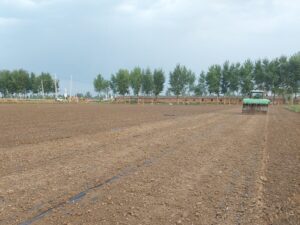
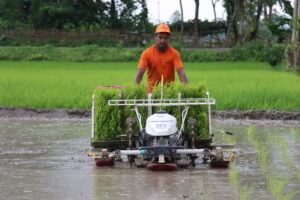
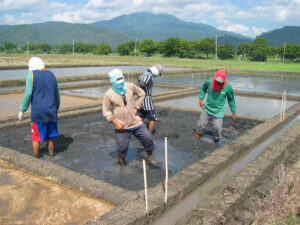
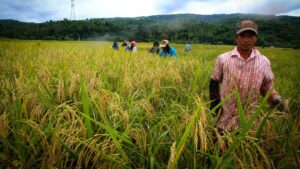
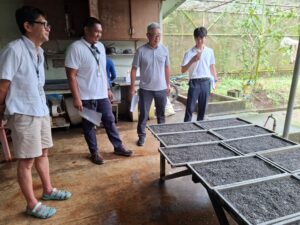
What will be the appropriate technologies for nutrient use efficiency, no use of pesticide and efficient water application method that must be addressed at all stakeholders level and there should be interdisciplinary approach to be taken under consideration while thinking of food security.
Dear Sir
Please see IRRI’s extensive collection of publications, datasets, and useful digital tools available online. Thank you.